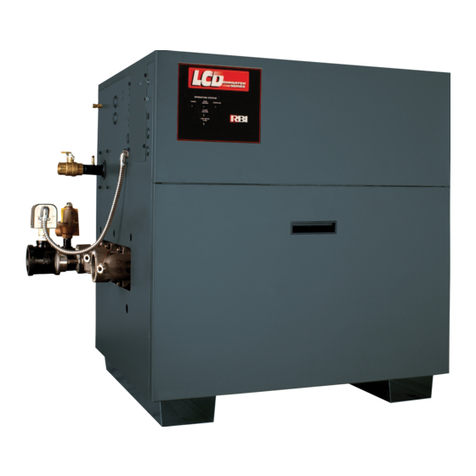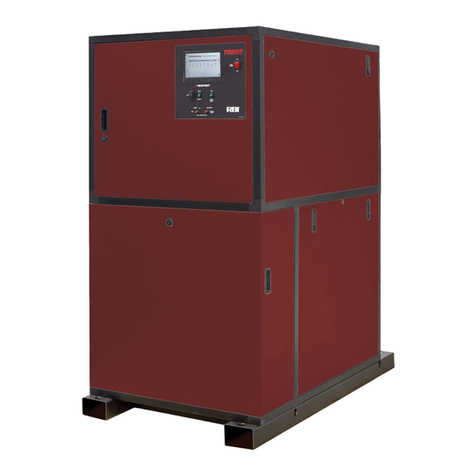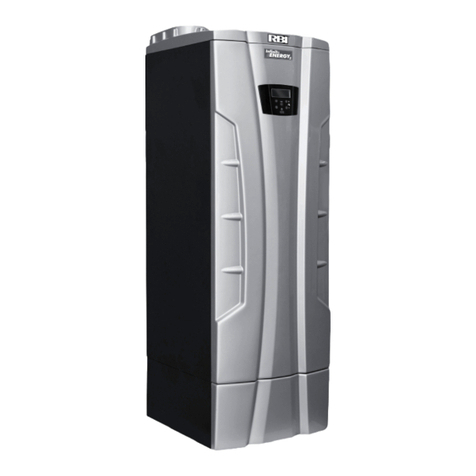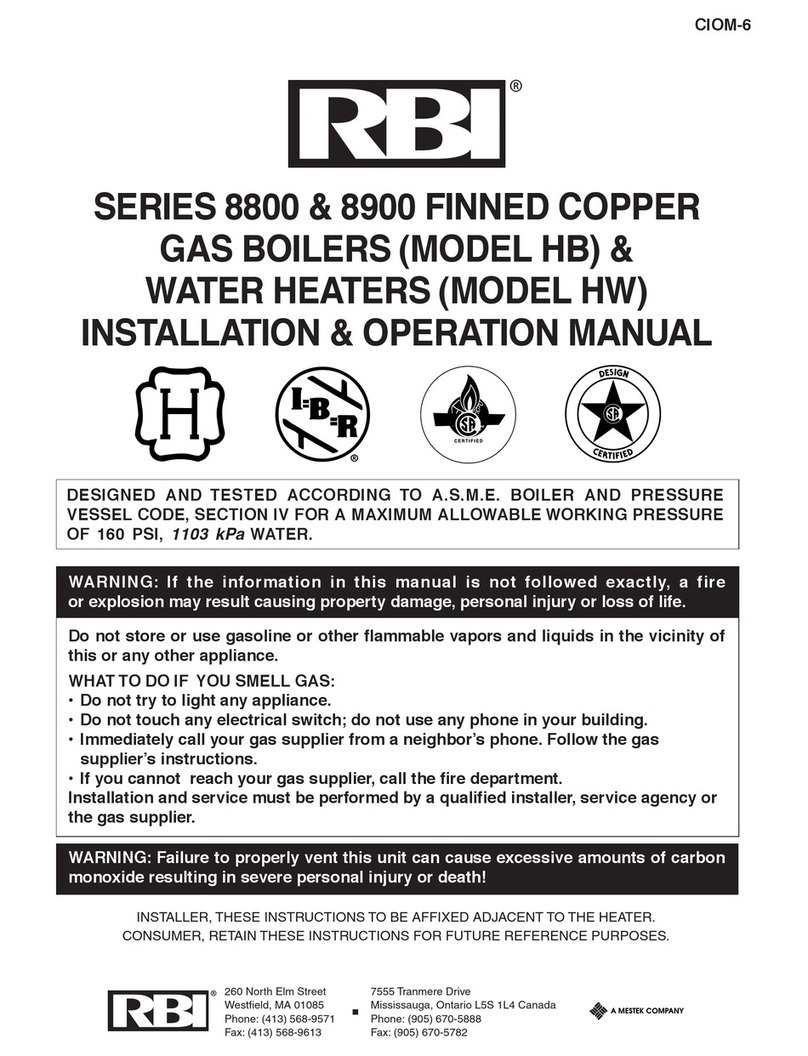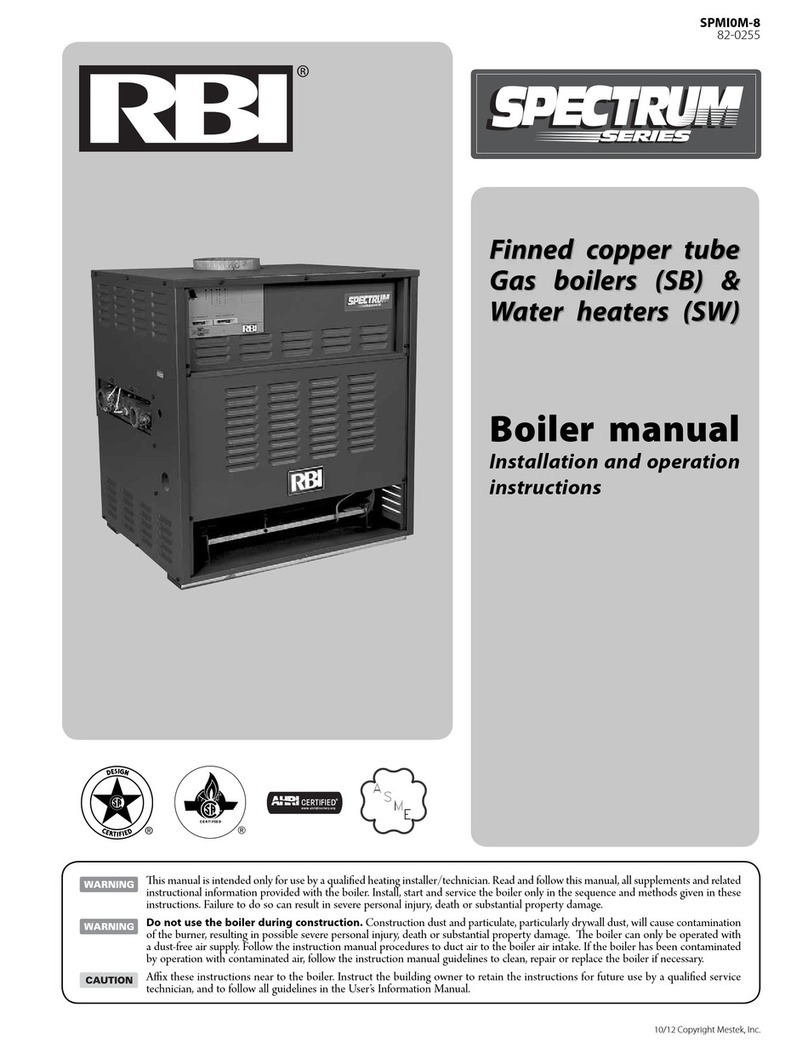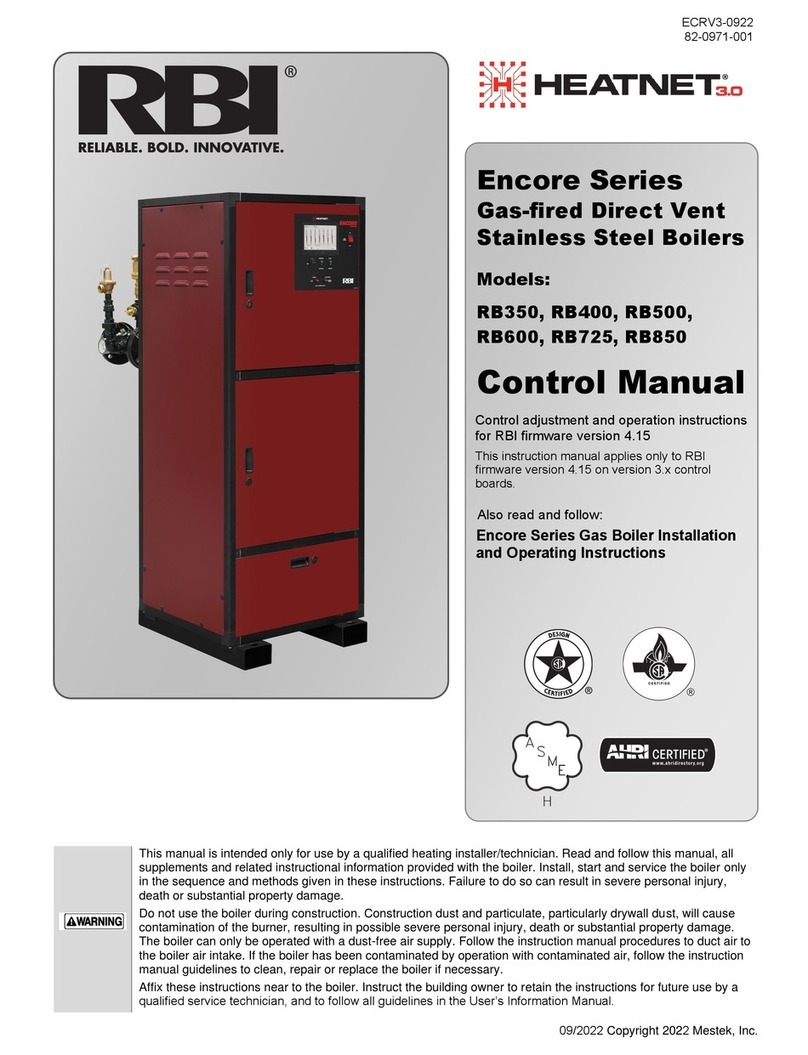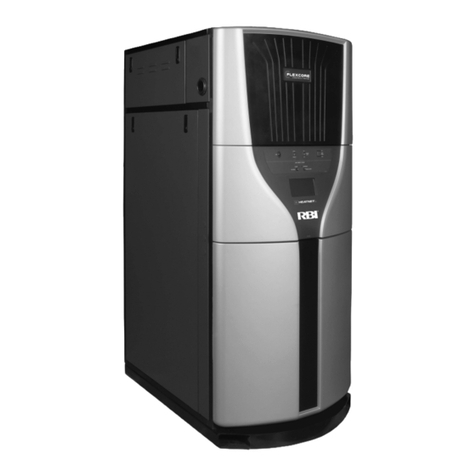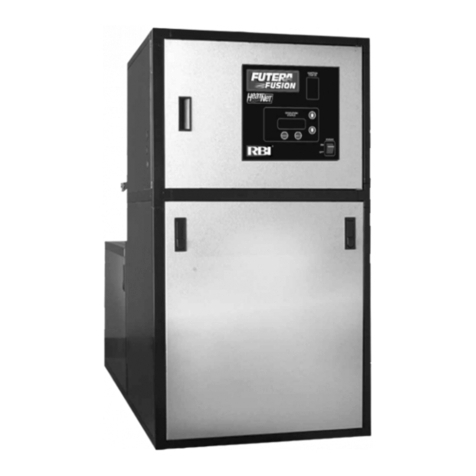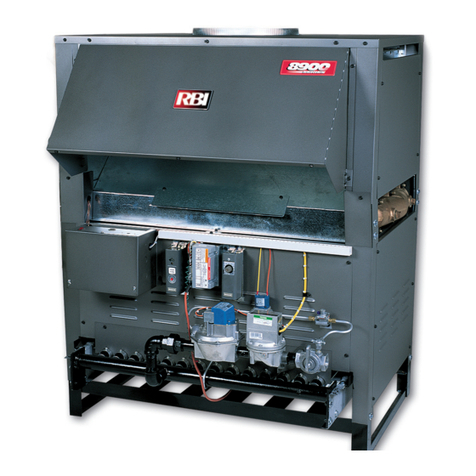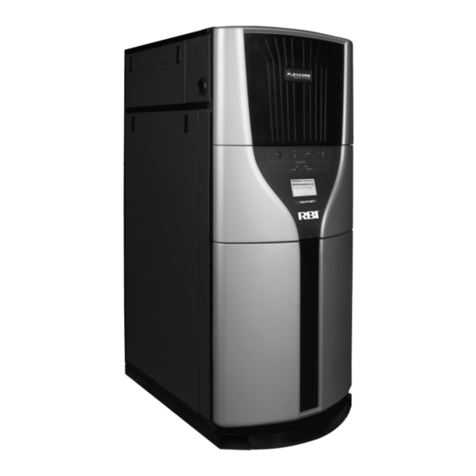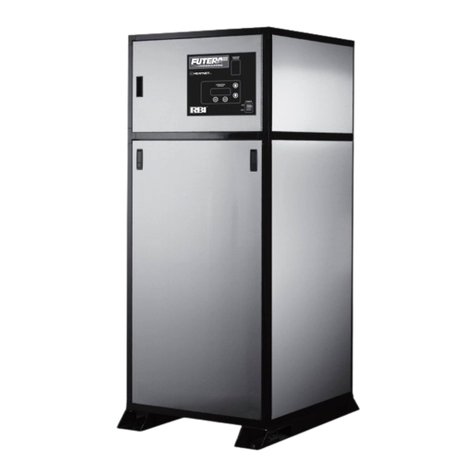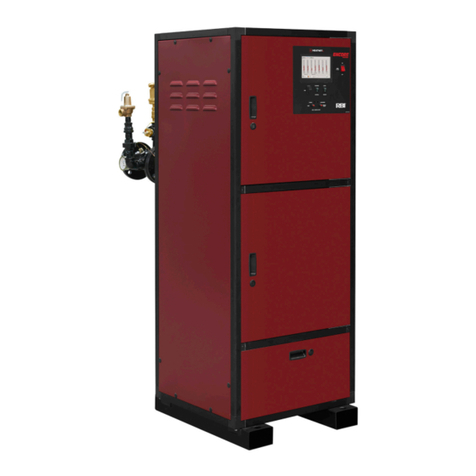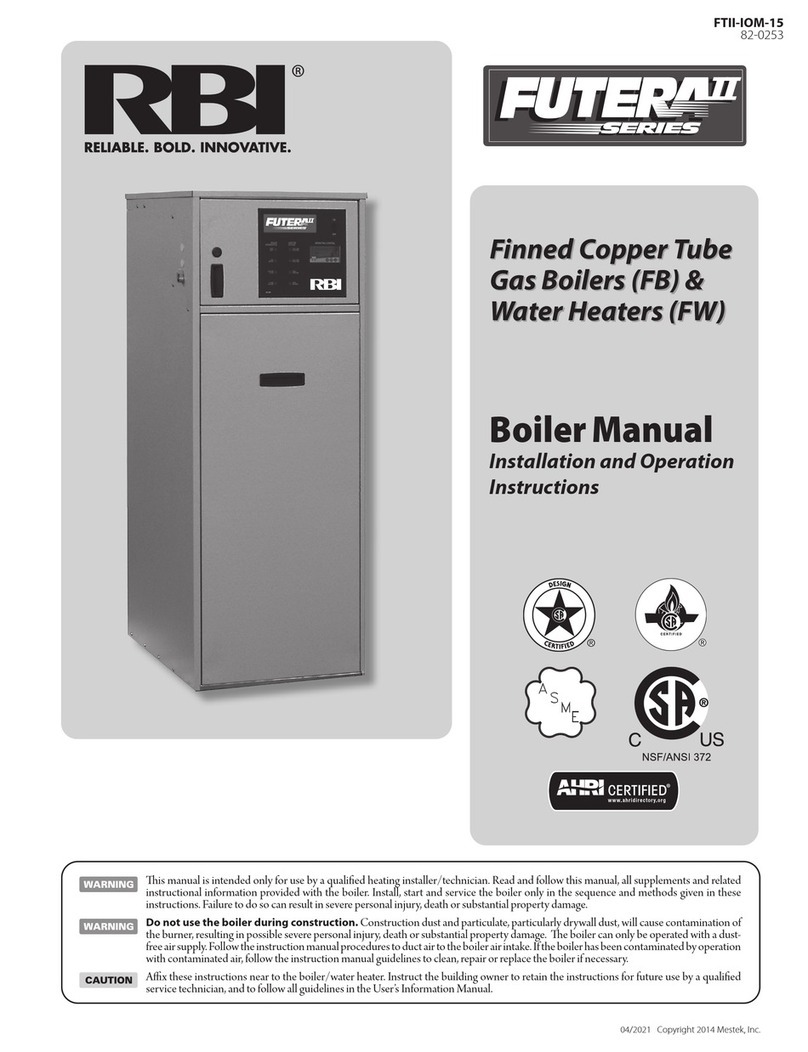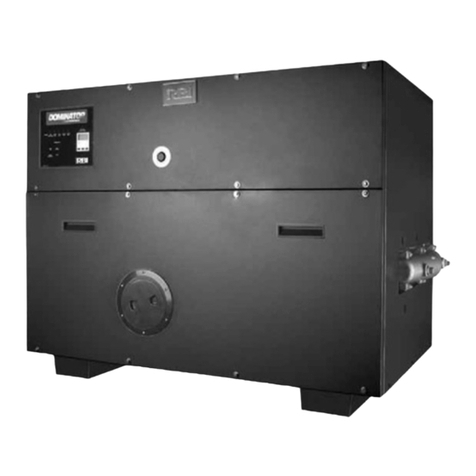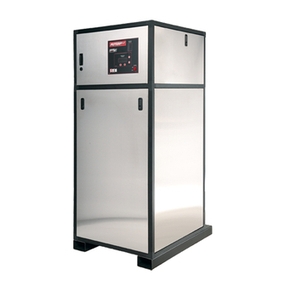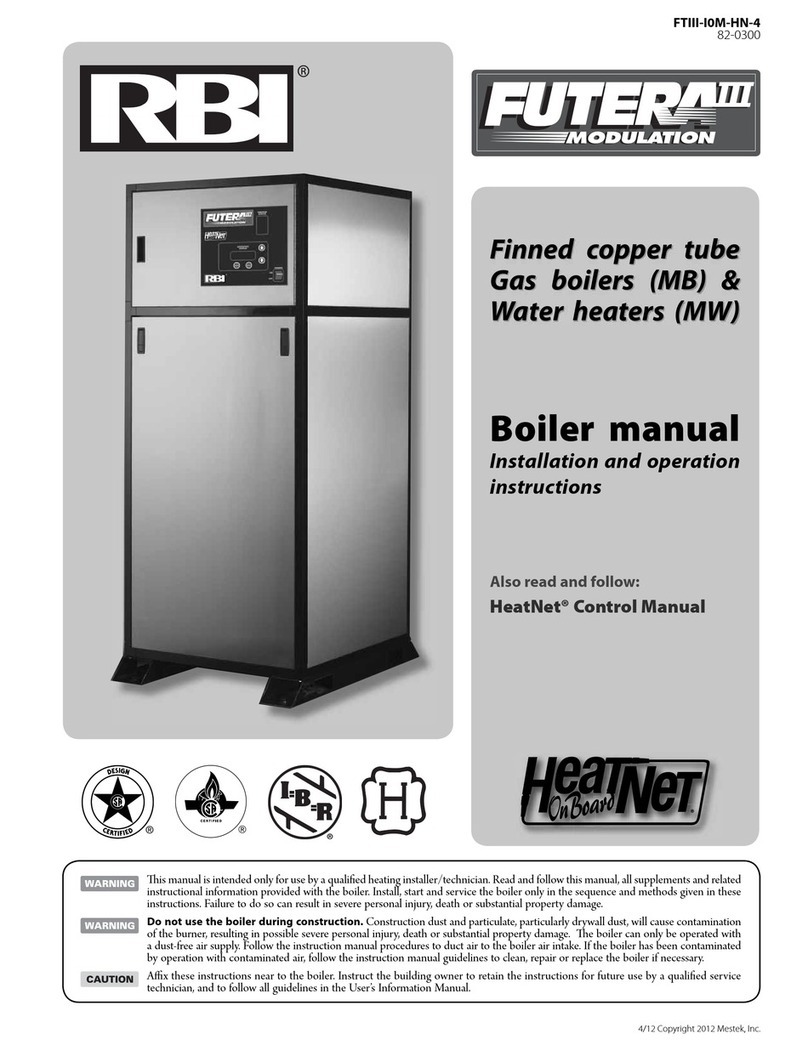
Finned copper tube gas boilers & water heaters – Boiler Manual
2
BEFORE YOUR START. . . . . . . . . . . . . . . . . PAGE 2
RATINGS & CAPACITIES . . . . . . . . . . . . . . . . PAGE 3
BOILER/WATER HEATER LOCATION . . . . . . . . .PAGE 3
COMBUSTION AIR & VENTILATION . . . . . . . . . . PAGE 3
GENERAL VENTING GUIDELINES. . . . . . . . . . . PAGE 9
VENTING OPTIONS . . . . . . . . . . . . . . . . . . PAGE 9
VERTICAL/CHIMNEY VENTING . . . . . . . . . . . PAGE 10
HORIZONTAL VENTING . . . . . . . . . . . . . . . PAGE 11
OUTDOOR VENTING . . . . . . . . . . . . . . . . PAGE 11
COMMON VENT SYSTEMS . . . . . . . . . . . . . PAGE 12
GENERAL PIPING REQUIREMENTS . . . . . . . . PAGE 13
HEATING SYSTEM PIPING . . . . . . . . . . . . . PAGE 14
DOMESTIC WATER SUPPLY PIPING . . . . . . . . PAGE 18
GAS SUPPLY PIPING . . . . . . . . . . . . . . . . PAGE 21
ELECTRICAL WIRING . . . . . . . . . . . . . . . . PAGE 22
GENERAL OPERATION . . . . . . . . . . . . . . . PAGE 22
OPERATING INSTRUCTIONS . . . . . . . . . . . . PAGE 26
CHECKING & ADJUSTMENTS. . . . . . . . . . . . PAGE 28
CONTROL DESCRIPTION . . . . . . . . . . . . . . PAGE 30
MAINTENANCE . . . . . . . . . . . . . . . . . . . PAGE 31
TROUBLESHOOTING . . . . . . . . . . . . . . . . PAGE 34
REPAIR PARTS . . . . . . . . . . . . . . . . . . . . PAGE 36
START UP SHEET . . . . . . . . . . . . . . . . . . PAGE 44
MASS. CODE . . . . . . . . . . . . . . . . . . . . . PAGE 46
WARRANTY . . . . . . . . . . . . . . . . . . . . . PAGE 47
BEFORE YOU START
is manual covers the application, installation, operation and
maintenance of a LCD Series nned copper heating boiler/water
heater/pool heater (Canada only).
To obtain the safe, dependable, ecient operation and long life for
whichthisheatingboiler/waterheaterwasdesigned,theseinstructions
must be read, understood and followed.
eLCDSeriesnnedcopperheatingboiler/waterheatershavebeen
designcertied by CSA forusewith naturalandpropanegasunder
thelatestrevisionofANSI-Z21.10.3/CSA4.3,GasWaterHeaters,and
ANSI-Z21.13/CSA 4.9, Gas-Fired Low Pressure Steam and Hot
Water BoilersandCAN1-3.1 IndustrialandCommercialGasFired
Boilers. Eachunithasbeenconstructedandhydrostaticallytestedfor
amaximum working pressureof160 psi,1103 kPain accordance
with Section IV of the A.S.M.E.BoilerandPressureVesselCode.
All aspects of the boiler/water heater installation must conform
to the requirements of the authority having jurisdiction, or, in the
absence of such requirements, to the National Fuel Gas Code, ANSI
Z223.1/NFPA 54-latest revision. Where required by the authority
having jurisdiction, the installation must conform to the Standard
for Controls and Safety Devices for Automatically Fired Boilers,
ANSI/ASME CSD-1.
If the information in this manual is not followed
exactly, a fire or explosion may result causing property,
personal injury or loss of life.
Do not store or use gasoline or other flammable vapors
and liquids in the vicinity of this or any other appliance
WHAT TO DO IF YOU SMELL GAS:
• Donottrytolightanyappliance.
• Do not touch any electrical switch. Do not use any
phoneinyourbuilding.
• Immediatelycallyourgassupplierfromaphoneoutside
thebuilding.Followthegassupplier’sinstructions.
• If you cannot reach your gas supplier, call the fire
department.
Installation and service must be performed by a qualified
installer,serviceagencyorthegassupplier.
Assurez-vous de bien suivre les instructions données
dans cette notice pour réduire au minimum le risque
d’incendieoud’explosionoupourévitertoutdommoge
matériel, toute blessure ou la mort
Ne pas entreposer ni utiliser d’essence ou ni d’autres
vapeurs ou liquides inflammables à proximité de cet
appareiloudetoutautreappareil.
QUE FAIRE SI VOUS SENTEZ UNE ODEUR DE GAZ:
• Nepastenterd’allumerd’appareil.
• Netouchezàaucuninterrupteur;nepasvousservir
destéléphonessetrouvantdanslebâtiment.
• Appelezimmédiatementvotrefournisseurdegasdepuis
unvoisin.Suivezlesintructionsdufournisseur.
• Sivousnepurvezrejoindrelefournisseur,appelezle
servicedesincendies.
L’installation et l’entretien doivent être assurés par un
installateur ou un service d’entretien qualifié ou par le
fournisseurdegaz.
Failure to properly vent this unit can cause excessive
amounts of carbon monoxide resulting in severe
personal injury or death!
DESIGNEDANDTESTEDACCORDINGTOA.S.M.E.
BOILER AND PRESSURE VESSEL CODE, SECTION
IV FOR A MAXIMUM ALLOWABLE WORKING PRES-
SUREOF160PSI,1103 kPaWATER.
INSTALLER, THESE INSTRUCTIONS TO BE AFFIXED
ADJACENT TO THE HEATER.
CONSUMER, RETAIN THESE INSTRUCTIONS FOR
FUTURE REFERENCE PURPOSES.
